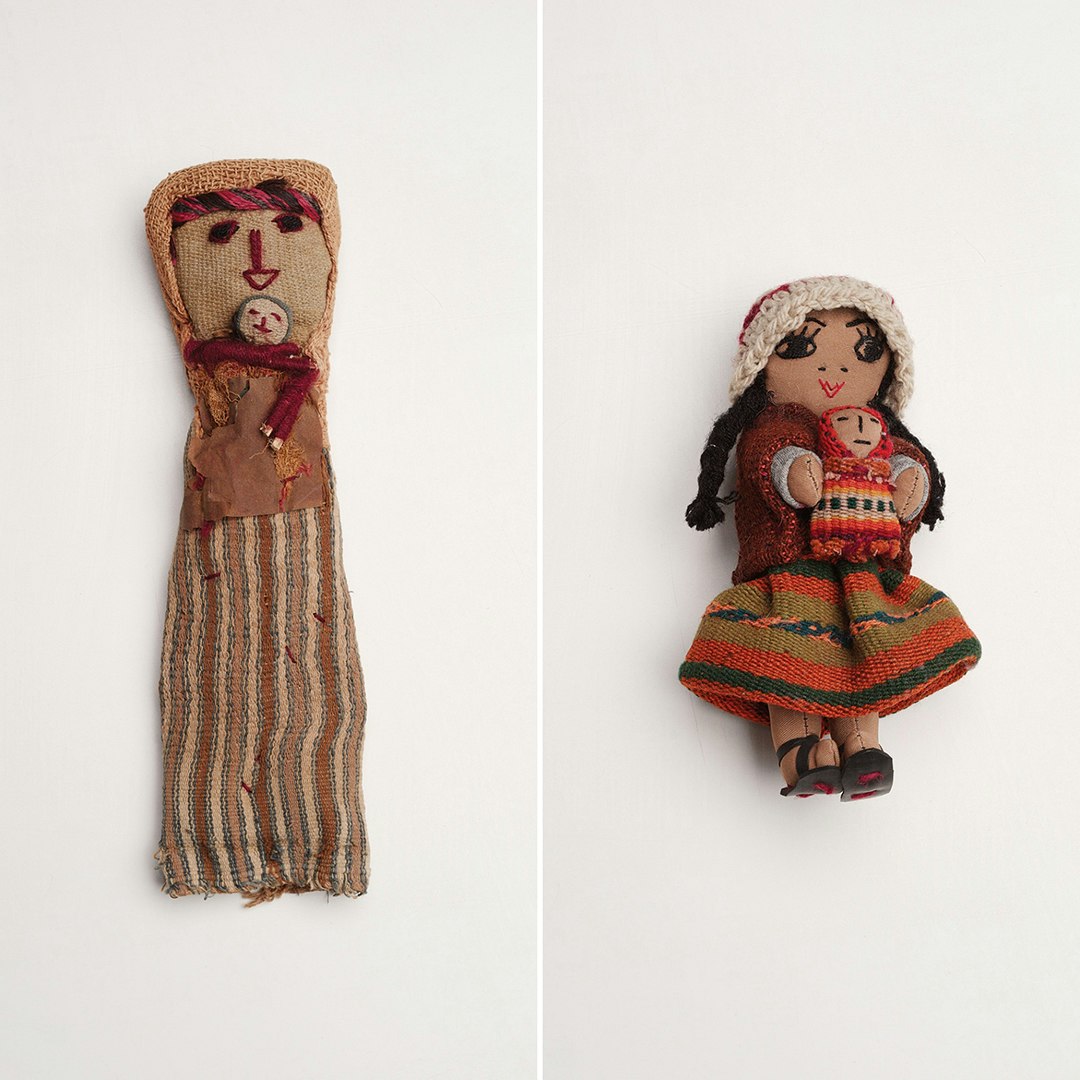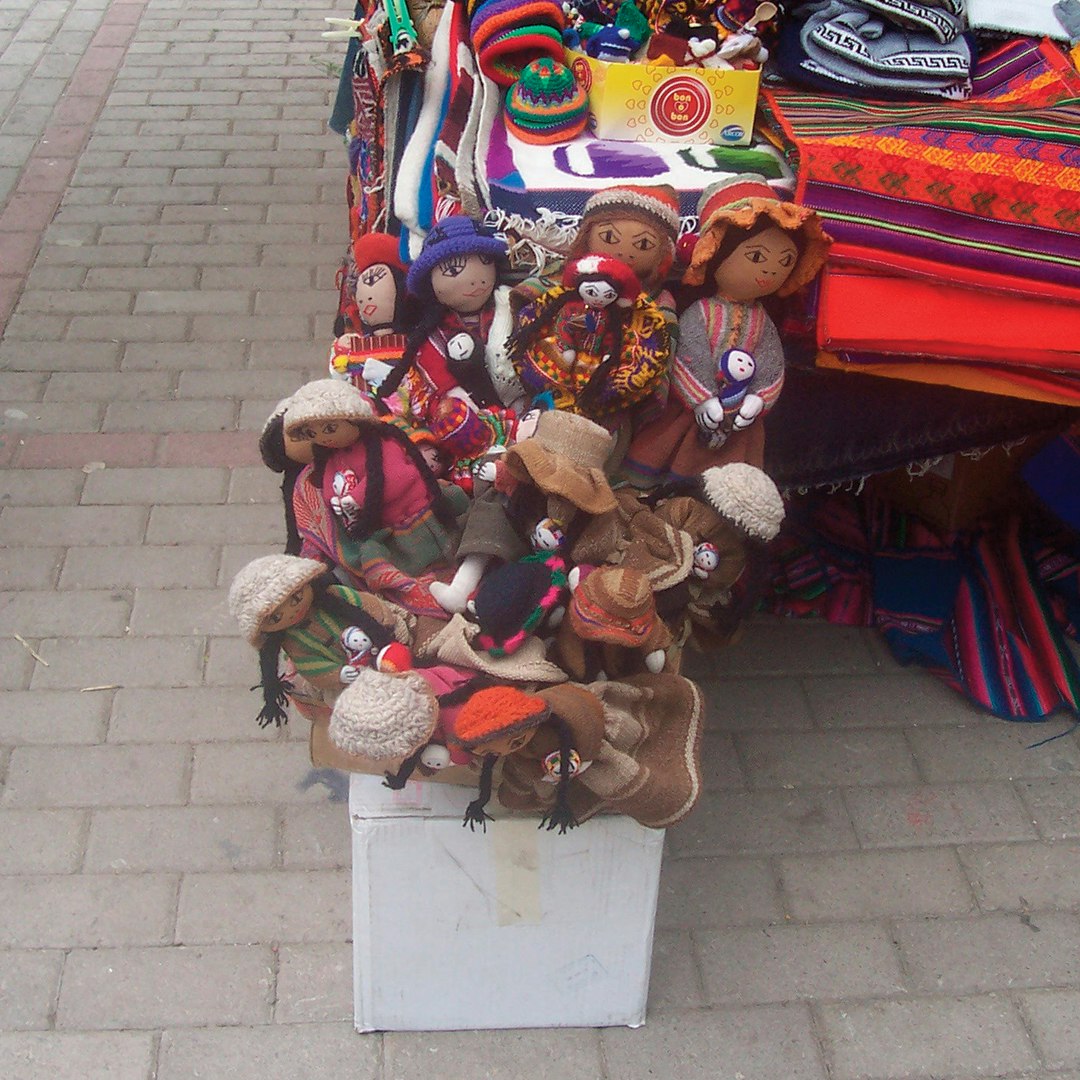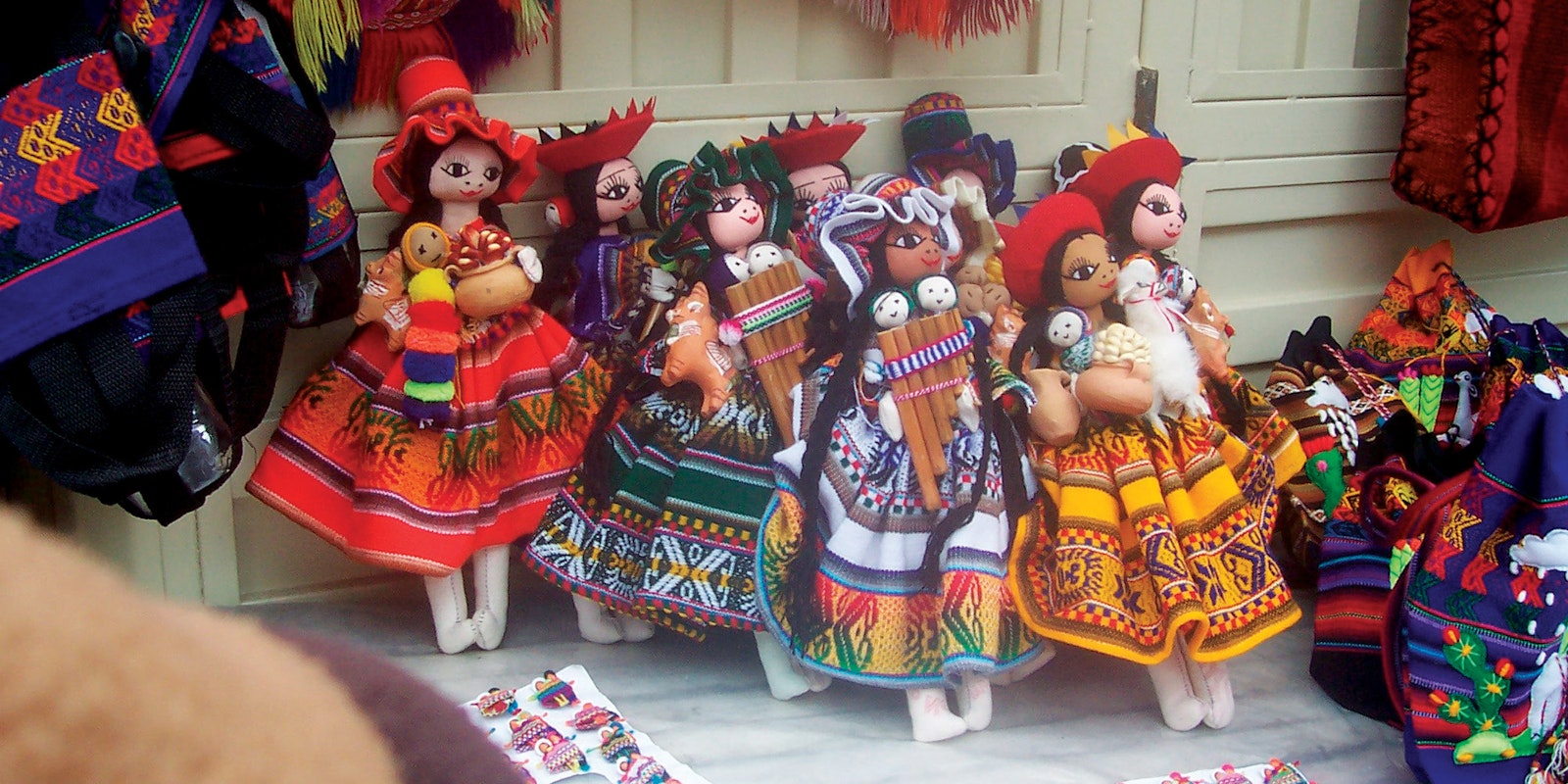At the station in Ollantaytambo, vendors await the arrival of the next train bearing tourists to the famed Inca site of Machu Picchu. Draped in the colorful blankets they sell, they carry baskets of handmade dolls in equally colorful indigenous dress.
When the train pulls in, the vendors cluster around the open doors and windows, bargaining in Spanish, English, and sign language. To tourists, the dolls are popular souvenirs of a visit to Peru; to the women who make them for sale, they are also a vital source of income. Such dolls are sold in shops and by street vendors all over Peru, in coastal as well as Andean towns.
Each doll is one of a kind. They wear full woven skirts, which may be embroidered. Some wear the traditional lliclla (Quechuan for back-cloth) across their shoulders. They have embroidered facial features. Their hats come in wide variety, reflecting those worn by Indian peoples in various regions of the Andes.
The dolls range in height from an inch (2.5 cm) to more than 14 inches (35.6 cm). The larger dolls are more elaborately dressed and may carry a baby, a basket, a piece of pottery, a baby llama, or a combination of these. By American standards, they are quite inexpensive—about U.S. $2 to $12.
 Rústica doll. Fabric remnants, vegetable and paper fiber, yarn. Peru. 2004. 10 inches (25.4 cm) tall. The doll’s one-piece rectangular body seems to be made of fabric remnants stiffened by vegetable fiber or cord. She wears a simple one-piece garment and hood of apparently used fabric that is coarsely stitched to the body (left). Doll in traditional Peruvian dress. Hand- and machine-sewn, woven, crocheted, embroidered. Peru. 2004. 6¾ inches (17.1 cm) tall. The doll has a stuffed cloth body, a woven skirt, a traditional, although plain, lliclla (back-cloth), a crocheted hat, and rubber sandals. Collection of the author, photos by Joe Coca
Rústica doll. Fabric remnants, vegetable and paper fiber, yarn. Peru. 2004. 10 inches (25.4 cm) tall. The doll’s one-piece rectangular body seems to be made of fabric remnants stiffened by vegetable fiber or cord. She wears a simple one-piece garment and hood of apparently used fabric that is coarsely stitched to the body (left). Doll in traditional Peruvian dress. Hand- and machine-sewn, woven, crocheted, embroidered. Peru. 2004. 6¾ inches (17.1 cm) tall. The doll has a stuffed cloth body, a woven skirt, a traditional, although plain, lliclla (back-cloth), a crocheted hat, and rubber sandals. Collection of the author, photos by Joe Coca
Shops carry a different type of handmade doll. The body of these rústicas (rustics) is a legless block fashioned of dried banana skin; the face is embroidered. The dolls come in many sizes and are dressed in old or old-looking fabrics. Similar dolls with square, neckless bodies of vegetable matter may be seen in Lima’s Museo Amano and Museo de la Nación; they are attributed to the Chancay culture (A.D. 1000–1400) of the central coastal region near Lima. Unlike their modern counterparts, however, the dolls in the museums have birdlike legs and woven facial features. The modern rústica dolls, which may be purchased in Peru for a few soles (1 sol = 35 cents), are sometimes found for sale in the United States, misidentified as antiquities, and priced accordingly.
 Dolls in a Cuzco market show a range of facial features, more elaborately dressed babies, and
a variety of crocheted, knitted, and fabric hats. Photo courtesy of author
Dolls in a Cuzco market show a range of facial features, more elaborately dressed babies, and
a variety of crocheted, knitted, and fabric hats. Photo courtesy of author
Sometimes, said a vendor in Cuzco, near Machu Picchu, a request for 100 or 150 dolls comes in to the artisans’ market there. The makers immediately pass the word around, get together, and work day and night to complete the order. In doing so, they are following an ancient tradition of cooperation in community activities. In a country whose textile traditions date back 10,000 years, indigenous doll makers are turning out a product—dolls—that benefits themselves and their families as well as those who buy them.
Interested in learning more about dolls? This article and more are in the PieceWork November/December 2004 issue.
Also, remember that if you are an active subscriber to PieceWork magazine, you have unlimited access to previous issues, including November/December 2004. See our help center for the step-by-step process on how to access them.
Jane Reid, a retired newspaper editor, is a freelance writer, editor, and needlework collector. She thanks Sara Camacho of Cuzco for helping gather information for this article.
Originally published October 17, 2018; updated November 21, 2022.

